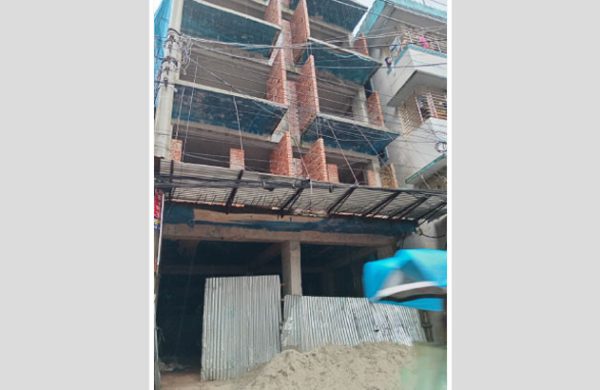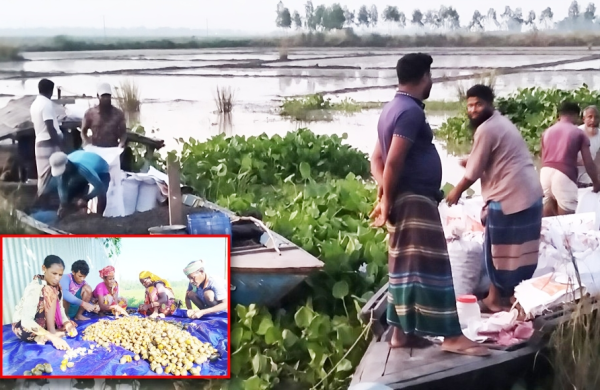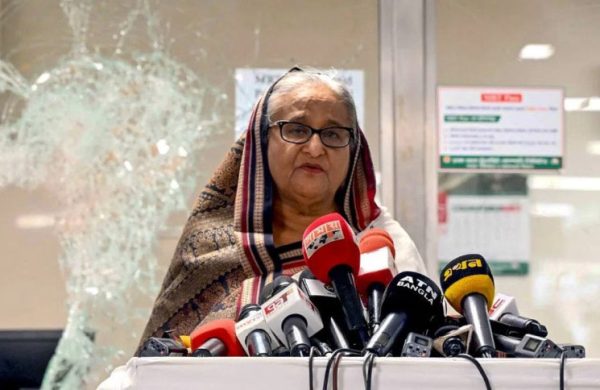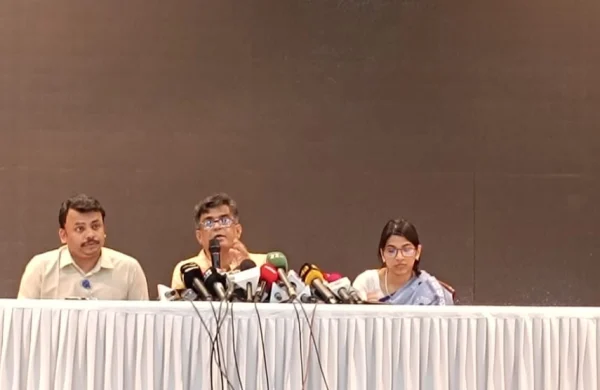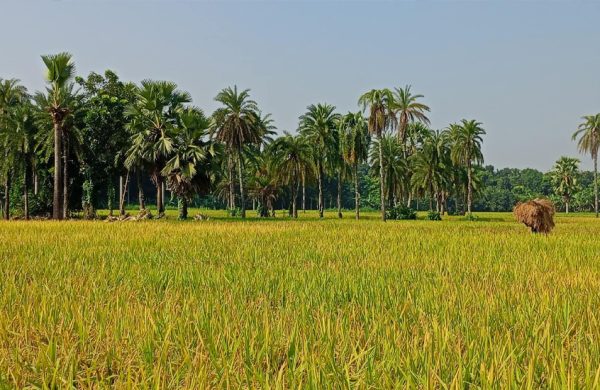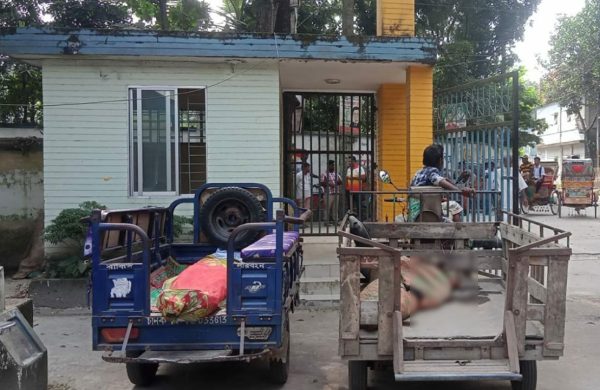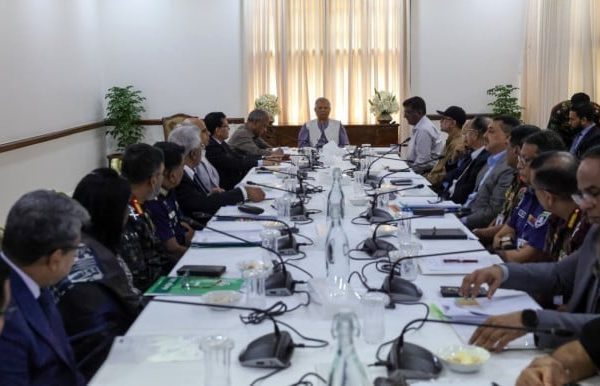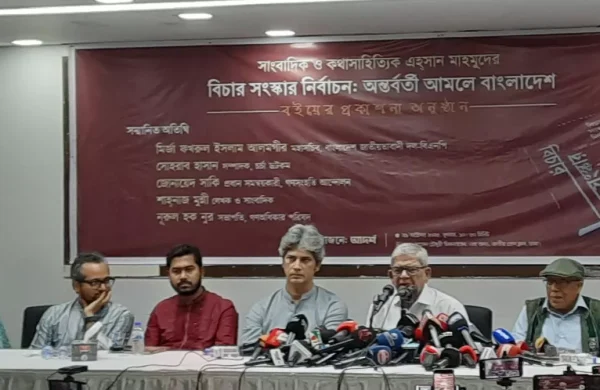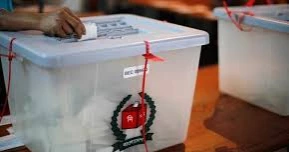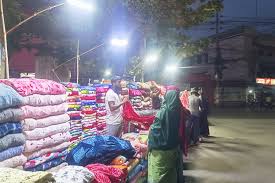Onion farmers forced to buy fertiliser with high rates
- Update Time : Wednesday, October 29, 2025
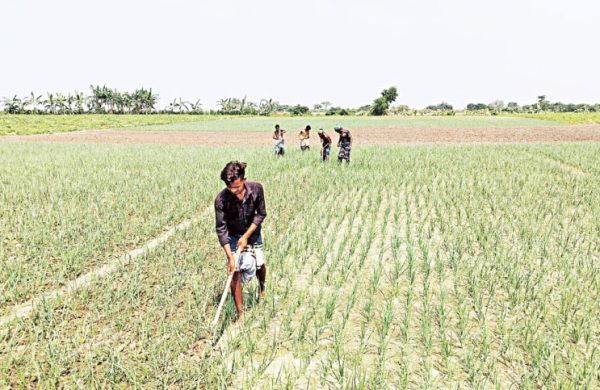
Staff Correspondent:
Onion farmers across Bangladesh’s major producing districts are being forced to buy chemical fertiliser at prices much higher than government-fixed rates, driving up production costs and discouraging cultivation of early onion varieties this season.
Growers in Pabna, Faridpur, and Rajbari — together accounting for nearly half of Bangladesh’s onions — say the sharp rise in fertiliser prices has made early cultivation of the Murikata (or Kondo) variety far less profitable.
In Pabna, the country’s largest onion-producing district, which alone produces a quarter of national output, a 50-kilogramme (kg) bag of diammonium phosphate (DAP) is selling for Tk 2,300-Tk 2,400, more than double the government-set rate of Tk 1,050 (Tk 21 per kg). Other fertilisers are also costlier: urea and TSP are officially Tk 27 per kg, while MoP is Tk 20, but market prices have surged well above these rates.
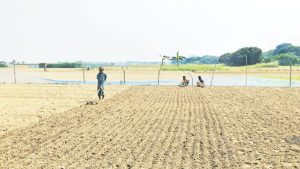
Photo: Collected
Md Montu Khan, a farmer from Sujanagar upazila, said DAP is the most important input for Murikata onions as it provides nitrogen and phosphorus, which are essential for root development and early growth.
“When cultivation began early this month, fertiliser was already scarce in the market. I could only plant one bigha because prices kept rising,” he said.
In Faridpur and Rajbari, which contribute 19 percent and 15 percent of national output respectively, dealers are selling urea at Tk 28-Tk 30 per kg, TSP at Tk 30, and MoP at up to Tk 25—all above government-set rates.
According to experts, urea promotes leafy growth, TSP strengthens roots and flowering, and MoP is crucial for bulb formation, disease resistance, and overall crop quality.
Cultivation of early onions began in the last week of September, and harvesting is expected in the first week of December. As demand for fertiliser peaks, prices have surged beyond the subsidised rates.
“The allocation I got this month was not enough for all the farmers in my area,” said Abu Sayeed, a fertiliser dealer in Northchannel union of Faridpur. “Many traders are bringing fertiliser from other districts at higher costs and selling it for more.”
Small retailers said they too are paying extra to wholesalers. “We have to pay Tk 300-Tk 450 more per sack, so prices naturally go up for farmers,” said Tarek Biswas, a trader at Talatala Bazar in Faridpur Sadar upazila.
Farmers say fertiliser costs have increased—along with higher pesticide and irrigation costs—by Tk 3,500-Tk 4,000 per bigha this year.
“My fertiliser cost has risen to around Tk 10,000 per bigha this year, up from Tk 7,000-Tk 7,500 last year. Even if yields are good, we’ll have to sell onions at around Tk 2,000 per maund just to break even,” said Nazmul Haque, a grower from Mohendrapur village in Rajbari’s Kalukhali upazila.
Another onion farmer from the same area, Shafi Mia (36), said, “This year, planting Murikata onions on one bigha of land cost me Tk 55,000-Tk 60,000. Even if production is good, we get a maximum of 60 maunds of onions, which are not sold for more than Tk 1,000 per maund during the season.”
Officials of the Department of Agricultural Extension (DAE) said early onion cultivation is progressing, though at a slower pace in some districts.
In Pabna, Murikata onions are targeted for 8,960 hectares this season, with an expected yield of 1.42 lakh tonnes. As of Sunday, only 2,873 hectares—about 32 percent of the target—had been brought under cultivation.
“We expect full coverage by mid-November,” said Md Ashikur Rahman, a DAE development officer in Pabna.
He, however, denied the existence of any fertiliser shortage, saying traders sometimes create artificial crises to charge higher prices. “We’re conducting drives to keep prices within the official range,” he added.
Md Shahaduzzaman, deputy director of the DAE in Faridpur, also said he was not aware of fertilisers being sold at higher prices.
“I have not received any reports of fertilisers being sold at higher rates. Sometimes farmers purchase more than they need, which creates temporary shortages and price hikes,” he added.
He said the authorities are working to ensure that fertilisers are sold at government-fixed prices.
But across onion-growing belts, farmers say they are consistently paying above government-set fertiliser rates.
Farmer Shahadat Hossain from Hafezdangi village in Faridpur Sadar said he had to buy MoP and DAP above the fixed rates, while some farmers like Md Majed Hasan of Kamardangi village travel several kilometres to find fertiliser at official prices.
Farmers say the price surge threatens to wipe out any margin they might have earned from early onions. Some said they were cutting down on Murikata cultivation altogether because fertiliser prices have eroded potential profit.
“Although onion bulbs are cheaper this year, fertiliser costs have soared,” said Md Kamruzzaman, a farmer from Durgapur village in Sujanagar upazila of Pabna.
“Last year, I cultivated 10 bighas of early onions at Tk 70,000-Tk 80,000 per bigha and incurred heavy losses. This year, costs have come down, but I still don’t find it worthwhile.”
Kamruzzaman said he is preparing to cultivate seed onions this year.
Another farmer in the same area said he also plans the same. “I’m preparing fields for seed onions now.”


